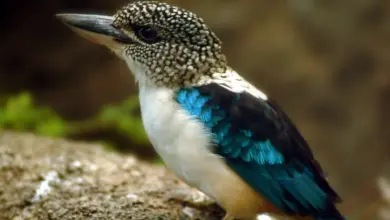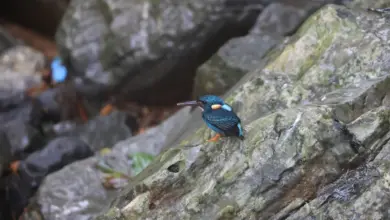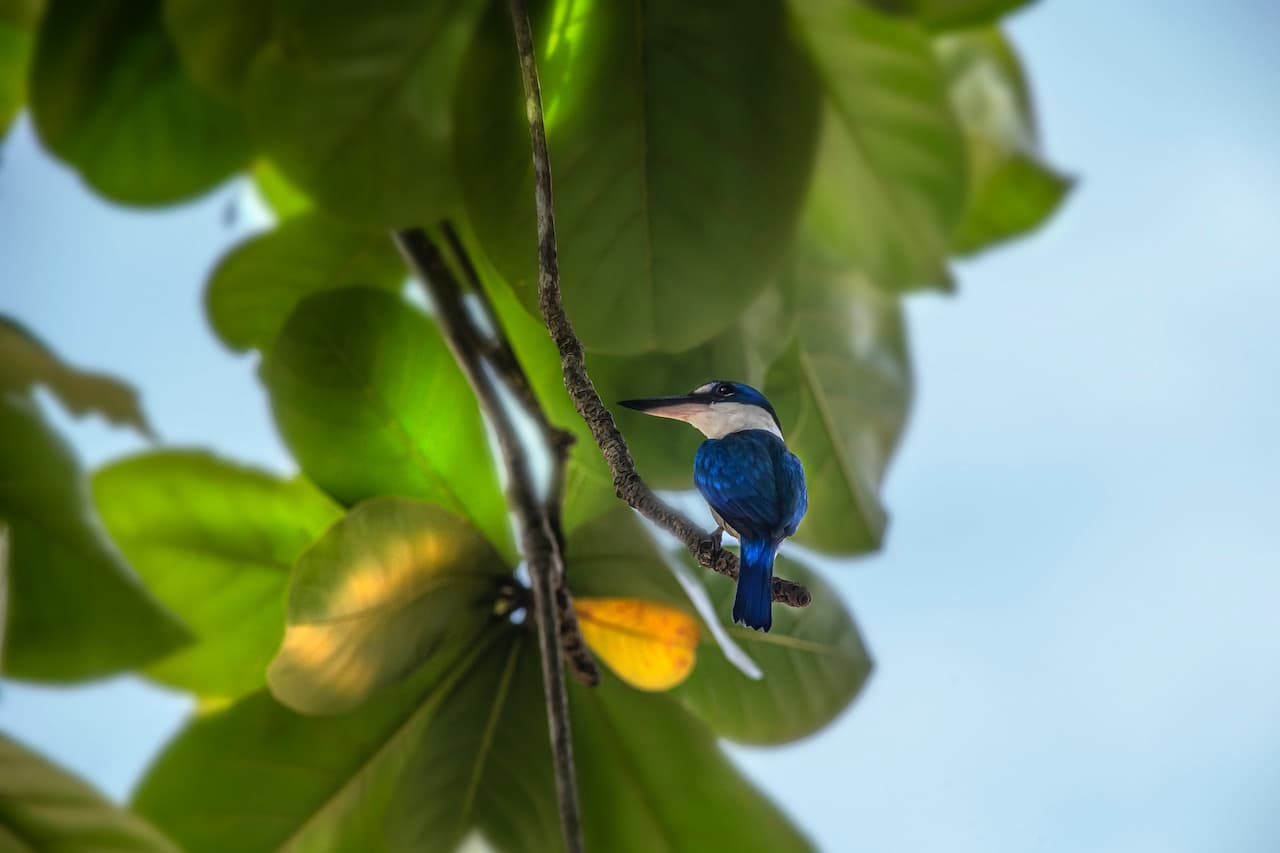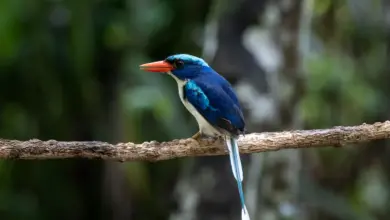The American Pygmy Kingfishers (Chloroceryle aenea) occurs naturally in the American tropics from southern Mexico south through Central America to western Ecuador, and then around the northern Andes cordillera in the east to central Bolivia and central Brazil.
They occupy the entire Amazon Basin and the Tocantins River drainage adjacent in Pará state Brazil. It also occurs on Trinidad.
This tiny kingfisher occurs in dense forests and mangroves along small streams or rivers with heavily vegetated banks.
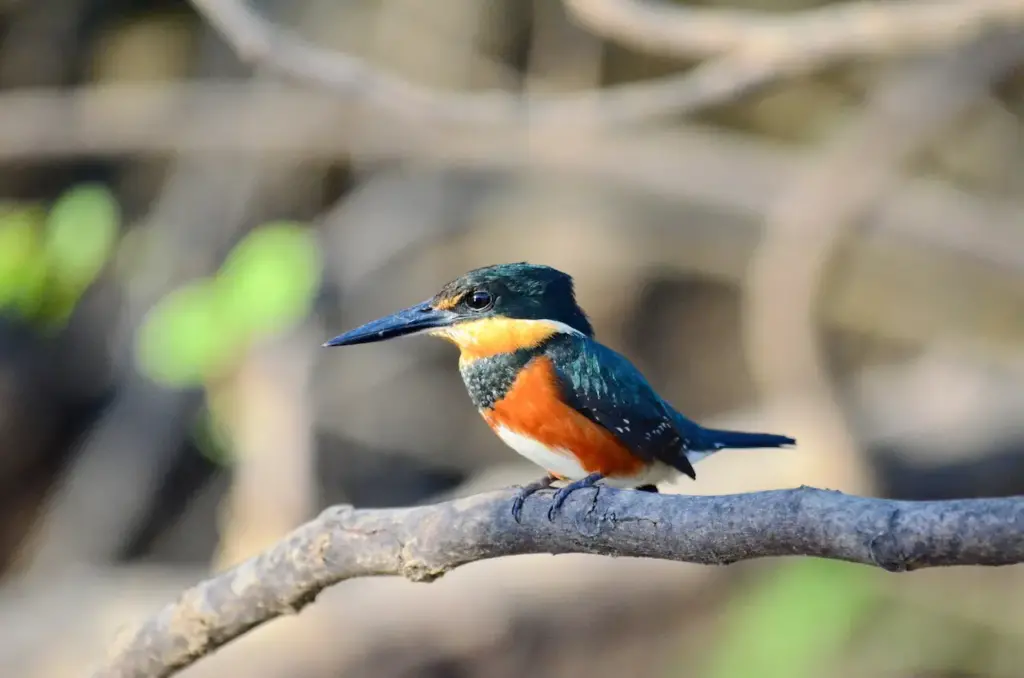
Breeding / Nesting
The female lays three, sometimes four, white eggs.
The unlined nest is in a horizontal tunnel up to 40 cm long made in a river bank, earth heap, or occasionally an arboreal termite nest.
Description
The American Pygmy Kingfisher is 13 cm long and weighs 18g.
It has the typical kingfisher shape, with a short tail and long bill. It is oily green above, with a yellow-orange collar around the neck, rufous underparts and a white belly. The female has a narrow green breast band.
Young birds resemble the adults, but have paler rufous underparts, no breast band, and speckled wings and flanks.
Species
There are two recognised subspecies of American Pygmy Kingfisher that intergrade in central Costa Rica.
- southern C. a. aenea – Nominate Form – has two lines of white spots on the wings, and
- northern C. a. stictoptera – has three or four lines of spots and a concealed white patch of feathers on the undertail.

Calls / Vocalizations
Its call is described as a weak tik or stony cht cht.
Diet / Feeding
American Pygmy Kingfisher perch quietly on a low branch close to water before plunging in head first after small fish or tadpoles. They will also hawk for insects. They are quite tame, but easily overlooked as they sit silently amongst riverside branches.
Species Research by Sibylle Johnson
Please Note: The articles or images on this page are the sole property of the authors or photographers. Please contact them directly with respect to any copyright or licensing questions. Thank you.


